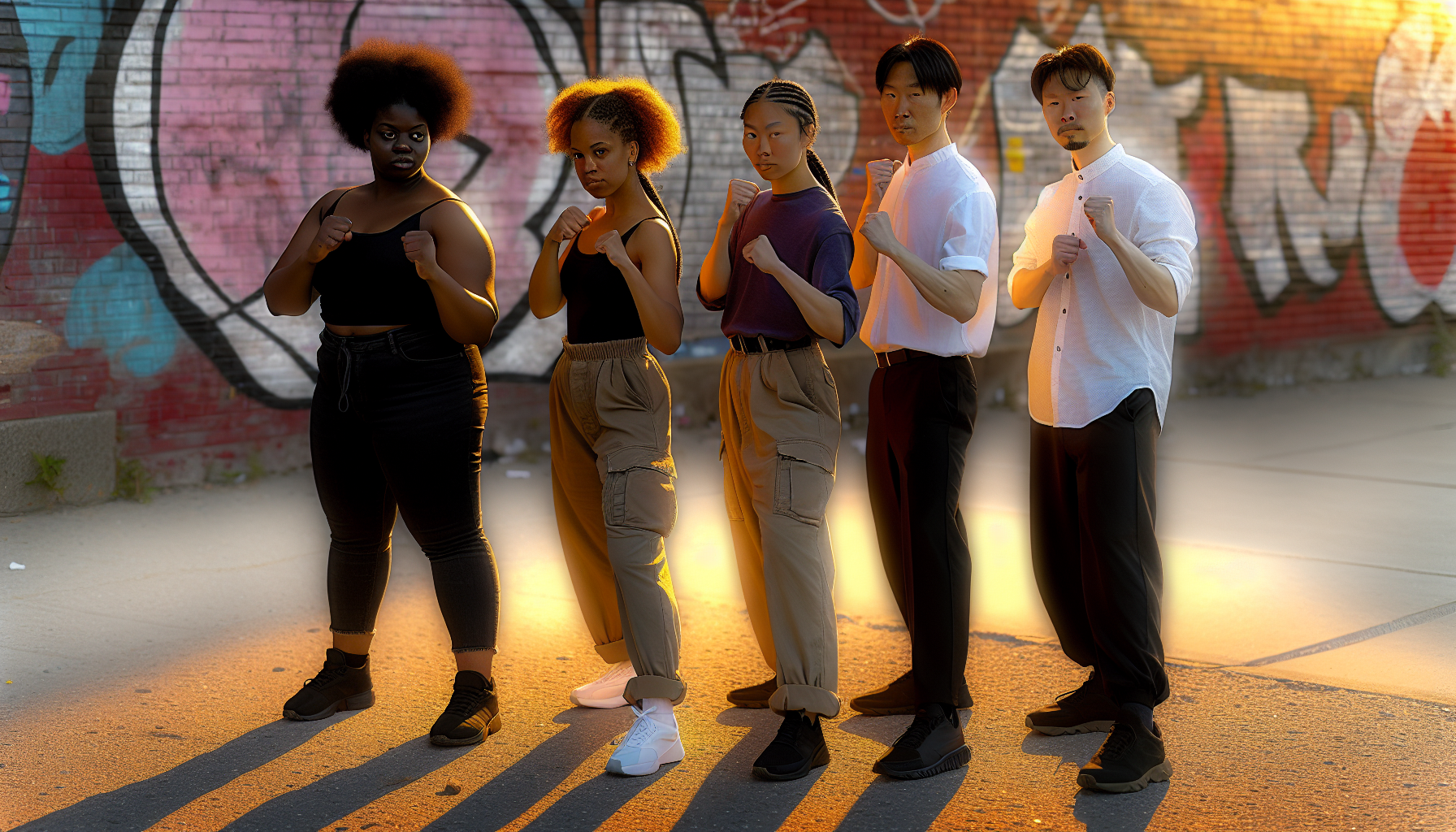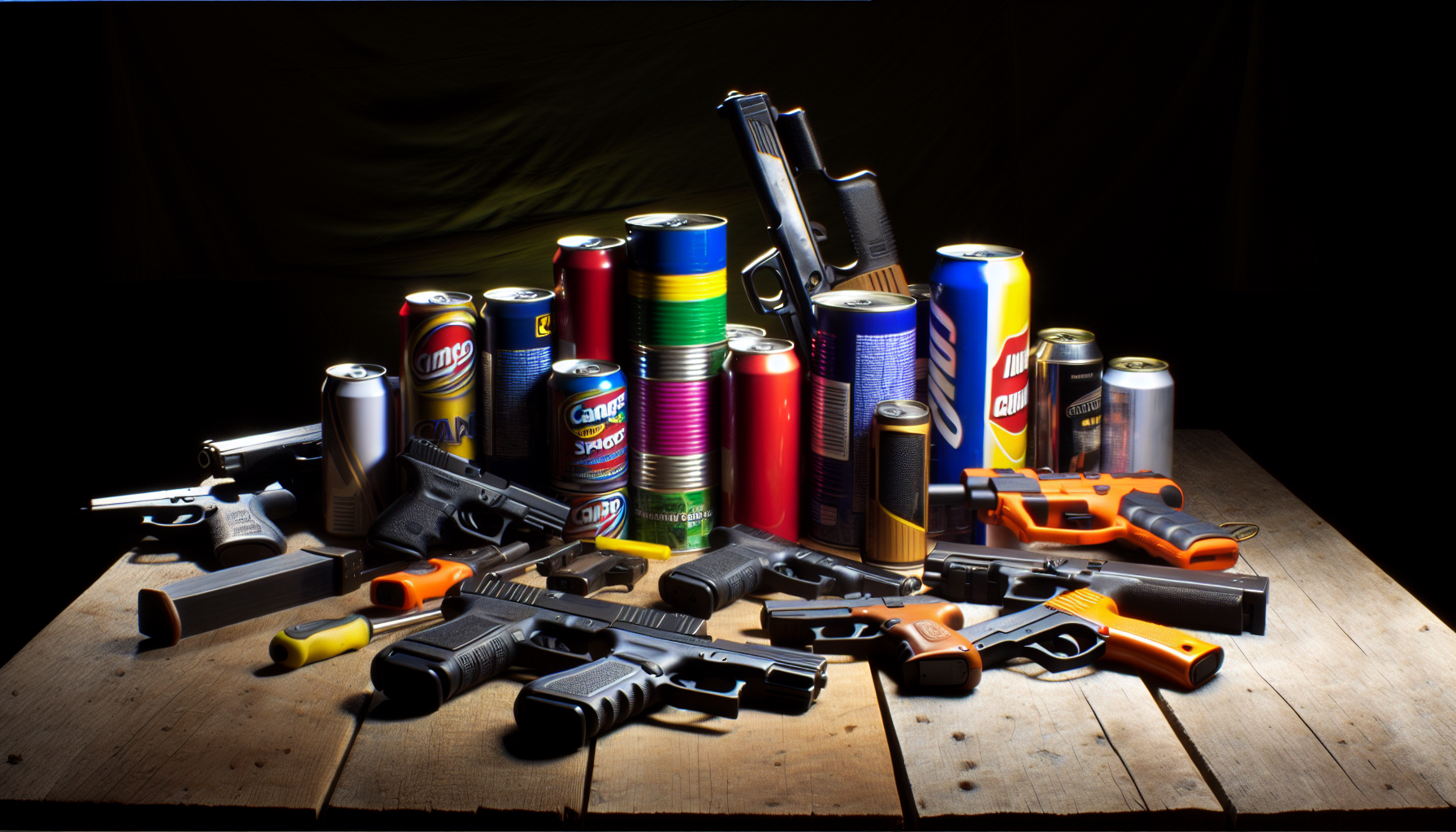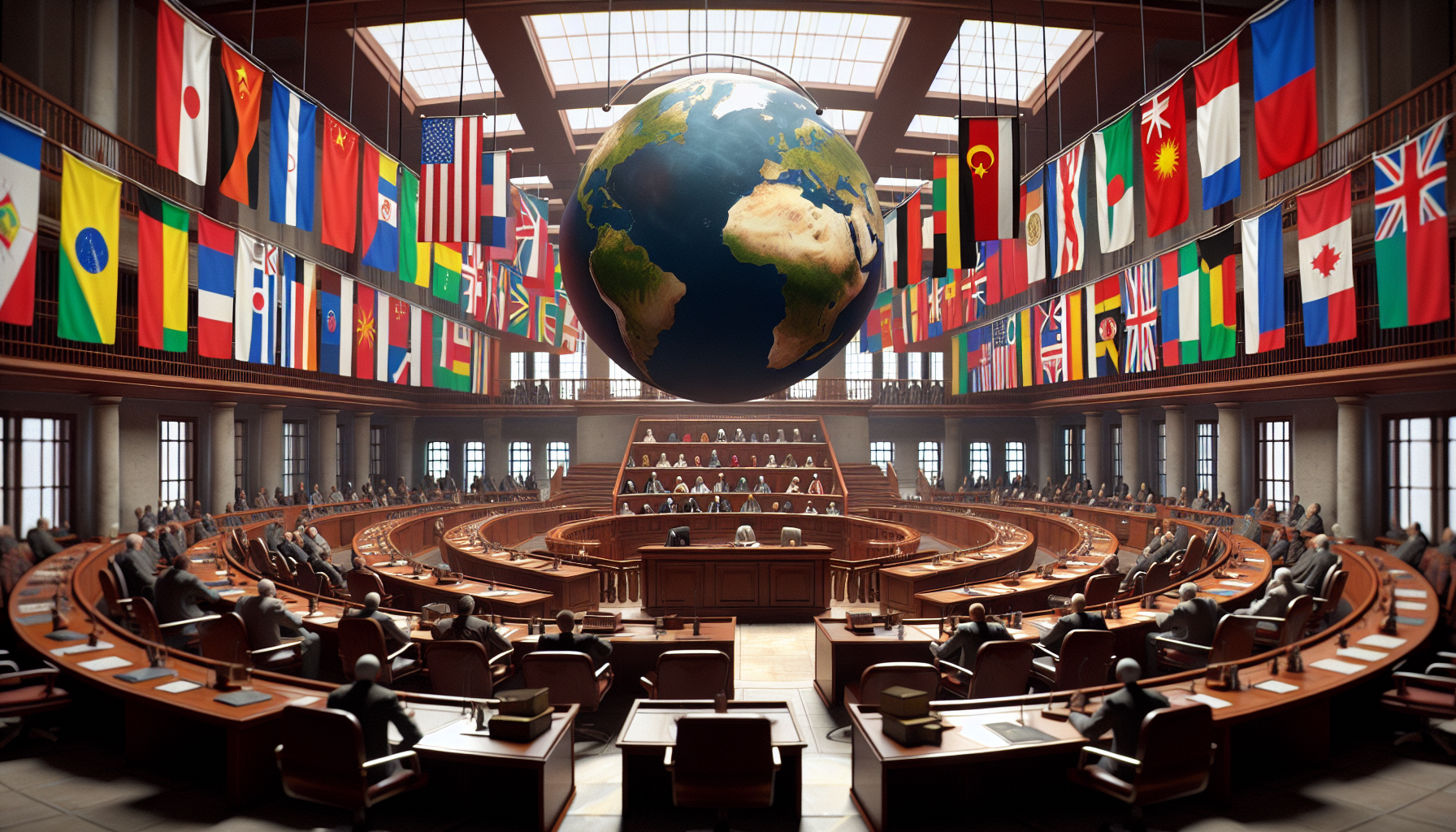Looking into self-defense rights, you’ll face different legal limits and cultural norms worldwide. Our deep dive reveals how the meaning of self-defense and people’s views change from country to country. You’ll get the scoop on Brazil’s tough rules for proving self-defense, the stand-your-ground laws in places like the U.S., and how society and laws mix in a complicated way in nations like Japan and South Africa. We’re cutting through the confusion to show clear-cut examples of how different places understand protecting yourself.
Key Takeaways
- The legal and cultural frameworks for self-defense vary significantly worldwide, influenced by each country’s specific ethical, moral, and historical circumstances.
- The principles of ‘reasonable force’, proportionality, and necessity are central to understanding self-defense in international law, but the interpretation and application of these principles differ among countries.
- Public opinion on self-defense tools such as firearms, stun guns, and pepper spray is shaped by cultural attitudes, crime rates, and political affiliations, leading to diverse regulations and attitudes across nations.
Defining Self-Defense: A Global Perspective

Self-defense is a right people have worldwide. It means you can defend yourself if someone tries to hurt you forcefully. However, different places have rules about self-defense because people’s ideas of right and wrong can change. Experts studying crime see many ways countries understand and use self-defense. This is because folks want to ensure everyone is treated fairly and that no one gets hurt more than they should. When discussing self-defense, we also think about ensuring regular people don’t get hurt in bad situations.
This universal right is molded by the complex interaction between legal structures and cultural perspectives, as discussed in the next book chapter.
Legal Frameworks for Self-Defense
Countries worldwide look at self-defense in many different ways, and there’s no single rule for when it’s okay to use force. Every country has its ideas about what proof you need before you can say you acted in self-defense. For example, the United States, the United Kingdom, and Australia all agree that you can use force if it seems reasonable and you have good reason to believe you’re in danger, even if you don’t have solid proof of an attack. This idea has sparked many talks and helped shape how we understand international law. It’s kind of surprising, but they might not need as much proof as the toughest standard, which is being sure “beyond a reasonable doubt.”
On the other hand, countries like Brazil, South Africa, and South Korea are more careful. In Brazil, you need to show that your life is in danger to get permission for self-defense, which ensures that safety and self-defense rights are respected. South Africa also sees self-defense as a good reason to have a gun, but you must prove why. In Europe, countries like Austria, Poland, and Malta have their own rules for when you can get a firearm license, showing that even within the same region, the rules can be quite different.
Cultural Attitudes and Influences
Hey there!
Did you know that the rules around defending yourself come from laws, but what people think about it comes from their culture? It’s pretty wild, but sometimes these ideas can be unfair. For example, folks in Europe are often seen as having a better reason to defend themselves than people of color when there’s trouble.
Also, we see a lot of guns on TV, in video games, and on the internet, and that can make people feel differently about using guns to protect themselves. Where you come from makes a big difference, too. Take Switzerland—people there are okay with owning guns and being responsible with them. But over in Japan, folks aren’t keen on using guns to keep safe.
When traveling, it’s super important to know these cultural do’s and do not’s because acting tough might not go over well in some places. Knowing what’s cool and what’s not in different cultures can help you avoid trouble regarding self-defense.
Stay safe and smart out there!
Reasonable Force: A Crucial Element in Self-Defense

Self-defense is not just about keeping yourself safe; it’s also about using the right amount of force. In the UK, the law states that you must use only the force that is necessary for the situation you’re in. This law is in Section 76 of the Criminal Justice and Immigration Act 2008. It tells you that you can defend yourself or others, but you’ve got to be reasonable with how much force you use.
When thinking about what counts as reasonable force, it’s all about what the situation calls for. In the UK, there’s a special rule for someone with an intruder in their house. In this case, they’re allowed to use a bit more force than usual. However, they still can’t go overboard.
Proportionality and Necessity
The two main rules for using reasonable force are proportionality and necessity. This means that when people defend themselves, they should only use as much force as needed to stop the threat. They need to really believe they must defend themselves (that’s the subjective part) and their belief should make sense to any regular person (that’s the objective part).
Different countries have different rules about whether you have to try to get away before you defend yourself. Places like France, Canada, and England have stand-your-ground laws. These laws say you don’t have to run away under certain situations, but you still have to use reasonable force. The castle doctrine takes this idea even further. If someone attacks you in your own home, you don’t have to run away. This idea can also apply to your car or where you work.
In countries like Poland and the Czech Republic, stand-your-ground laws let you protect yourself against any danger to your safety, health, or life, no matter where you are. But in Germany, you can use deadly force as long as you don’t go way over the top compared to the attack. These different rules show how the ideas of proportionality and necessity can change depending on where you are.
Examples of Reasonable Force Around the World
Let’s talk about how using the right amount of force in self-defense works in the real world. In the UK, if you’re defending yourself and truly believe you need to use force immediately, it’s usually seen as okay. Take the story of Tony Martin, for example. He was a farmer in the UK who shot a burglar on his property. This caused a huge debate about how much force homeowners can use when they’re trying to protect their homes. At first, the courts said Tony Martin was guilty of murder, but then they changed it to manslaughter. This case really shows that figuring out what counts as ‘reasonable force’ isn’t easy, and we’ve got to think about how scared the person felt at the time.
So, when we talk about self-defense and using force, it’s super important to remember that it’s all about what the person thinks they need to do in that scary moment.
Self-Defense and Firearms, Stun Guns and Pepper Spray: Diverse Regulations and Attitudes

Let’s look closer at self-defense and the tools people use to protect themselves. We’re talking guns, stun guns, and pepper spray here. These tools are always in the middle of a big argument about our rights and staying safe. Some say these tools are great for stopping an attack before it gets bad. But, boy, this topic is tricky.
What kind of tool works best for different sticky situations? How can we make sure people use them correctly and follow the law? We’re going to break it down into smaller parts below.
Now, let’s dive right in and clear things up!
Gun Ownership Laws and Self-Defense
Gun ownership laws, a focal point in the self-defense discussion, vary greatly across countries. Here are some examples:
- The United States constitutionally protects the right to bear arms through the Second Amendment, significantly influencing gun ownership laws and the recognition of self-defense rights.
- Japan’s stringent gun laws restrict firearm ownership, marking a narrow interpretation of self-defense rights.
- Countries like Brazil and South Africa demand substantial justification for gun ownership, with self-defense being a recognized but tightly regulated motive.
European countries demonstrate distinct approaches to gun ownership and self-defense:
- Italy has a ‘legitimate defense’ bill.
- Austria accepts self-defense as a reason for handgun licenses.
- The United Kingdom has a discretion-based system.
- In Ireland, residents have the right to use lethal force for self-defense.
- Poland and Malta have specific criteria for granting firearms licenses, including self-defense.
These examples illustrate the different ways that several countries in Europe balance gun ownership with protection rights.
Public Opinion on Firearms and Self-Defense
Public opinion has a big impact on how people see firearms and self-defense. This opinion is usually influenced by personal experiences with gun violence and the crime rates in their area. Several factors affect what people think about using guns for self-defense.
- Race
- Education level
- Urban versus rural living
When deciding whether there should be full access to guns in high-crime areas or stricter gun control measures, differing opinions arise due to various factors. Laws like Florida’s stand-your-ground laws and other gun control measures spark diverse public opinions.
Some evidence suggests that such laws could lead to an increase in firearm homicides. Public views on firearms and self-defense often polarize along political lines, with notable differences between gun owners and non-owners as well as among political party affiliations. These factors create a complex landscape of opinions and attitudes toward firearms and self-defense.
Travelers and Expats: Navigating Self-Defense Laws Abroad

Navigating foreign self-defense laws can be tricky for travelers and expats. To stay safe, it’s important to understand the local customs, laws, and cultural norms. It’s also wise to keep up with any travel advisories or warnings from your home country’s government. Using personal safety apps, having emergency contact information handy, and taking self-defense classes can all help boost your safety while abroad.
Travelers can avoid becoming crime targets by staying aware of their surroundings, trusting their gut feelings, moving in groups, and maintaining a low profile. Some security measures to consider include:
- Avoiding real-time social media location updates
- Researching common travel scams
- Securing belongings
- Avoiding risky areas
- Using whistles to attract attention during an emergency
These practices can help ensure a safe and enjoyable travel experience.
Language competence can be a key factor in guaranteeing personal safety, as knowing basic phrases in the local tongue facilitates interaction and navigation with locals.
Researching Local Laws and Customs
Before embarking on their journey, travelers should research local laws and customs related to self-defense in their destination country. Official government websites, such as the U.S. Department of State’s travel advisories, provide up-to-date information on safety and legal standards in foreign countries. For more specific legal information regarding self-defense, they can contact the local embassy or consulate of the destination country.
The legal frameworks governing self-defense, including gun laws, vary significantly worldwide, affecting the accessibility and control of firearms for self-defense purposes. Understanding these nuances is crucial for travelers to navigate the complex terrain of self-defense laws abroad. Reading travel blogs, forums, and articles authored by expats can provide insight into the practical aspects of self-defense in a specific locale.
Adapting to Different Self-Defense Environments
Adapting to different self-defense environments means travelers must pay attention to their surroundings, trust their gut feelings, and use practical self-defense techniques. Each environment comes with its own safety risks, so having a flexible self-defense approach is important. Researching neighborhoods, avoiding high-crime areas, and dressing to fit in with the local people are effective ways to stay safe.
Staying aware of what’s happening around you and listening to your instincts can help you avoid potentially dangerous situations where you might feel at risk. Similarly, practical self-defense methods like using everyday objects as weapons and sticking with a buddy system can improve your safety.
Additionally, joining local community groups can provide valuable insights into navigating self-defense issues in a new environment.
Case Studies: Self-Defense Scenarios in Different Countries

Let’s delve into different interpretations of self-defense worldwide by looking at real-life examples. These case studies, where individuals used force to protect themselves or others, give us a peek into how self-defense laws play out in court. Understanding how various countries view self-defense is essential to grasping its significance universally and understanding how its application can vary.
In Fukuoka, Japan, a bar manager faced an attack from a customer. The manager put the customer in a headlock to defend himself but accidentally caused the customer’s death. Initially, the manager was charged with manslaughter, showing the limits of self-defense allowed under Japanese law.
High-Profile Self-Defense Cases
High-profile self-defense cases provide invaluable insights into the complexities and challenges of applying self-defense laws in various countries. Studies of defensive gun use cases reported in US news showed that:
- In about half of the incidents, the aggressors were armed with firearms
- In nearly 90% of incidents, victims fired their weapons
- Home invasions represent 20% of defensive gun use cases
- Other significant incident types include escalating arguments (13%), romantic partner disputes (11%), and store robberies (9%)
In 2019, the media reported that fewer than 600 potential aggressors were killed in the United States in defensive gun use incidents. The Gun Violence Archive in the United States gathers detailed news stories about defensive gun uses, such as in-home invasions and drug-related situations. These stories are often verified by the police and come from victims, perpetrators, or witnesses. They help us better understand these incidents and how they affect society.
Lessons Learned from International Self-Defense Cases
International self-defense cases teach us important lessons, stressing the need to understand and address the broader social and political contexts surrounding self-defense. For marginalized communities, like the African American community, it is crucial to rethink the concept of self-defense. It is intertwined with the struggle for empowerment and taking proactive steps to protect oneself. In this context, self-defense is viewed as a collective, organized, and political act beyond legal definitions and individual vigilantism.
The lessons from history are also significant. The longstanding historical violence, aimed at maintaining subjugation, emphasizes the importance of developing an independent capacity for self-defense as part of Black empowerment. These lessons highlight the necessity of seeing self-defense as a right and a tool for empowerment and resistance against systemic injustice.
Summary
In conclusion, people worldwide interpret and apply self-defense in various ways. This diversity is influenced by many factors such as laws, culture, history, and societal norms. Understanding the idea of reasonable force and dealing with self-defense laws in different countries can be complex. As we explore this topic, we see the importance of respecting these different perspectives to create a more inclusive global community.
Frequently Asked Questions
What is the best definition of self-defense?
Self-defense can be defined as the right to protect oneself, family, or property from attack using reasonable force, without exceeding what is necessary.
What is the international right of self-defense?
The international right of self-defense allows a State to use force in response to an armed attack, thereby repelling the attack or imminent threat.
What is the difference between self-defence and self-defense?
The difference between self-defence and self-defense lies in the spelling, which depends on the type of English being used. In American English, “defense” is most common, so “self-defense” is correct, while in British English, “defence” is standard, making “self-defence” correct.
What is the concept of reasonable force in self-defense?
Reasonable force in self-defense means using only as much force as is necessary and proportional to the threat, ensuring it does not exceed what is reasonably needed to defend oneself or another.
How do cultural attitudes influence the interpretation of self-defense?
Cultural attitudes significantly influence society’s views on self-defense by shaping acceptance of self-defense tools and permissible force in such situations.


